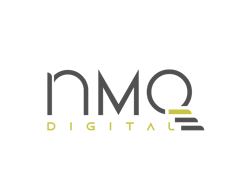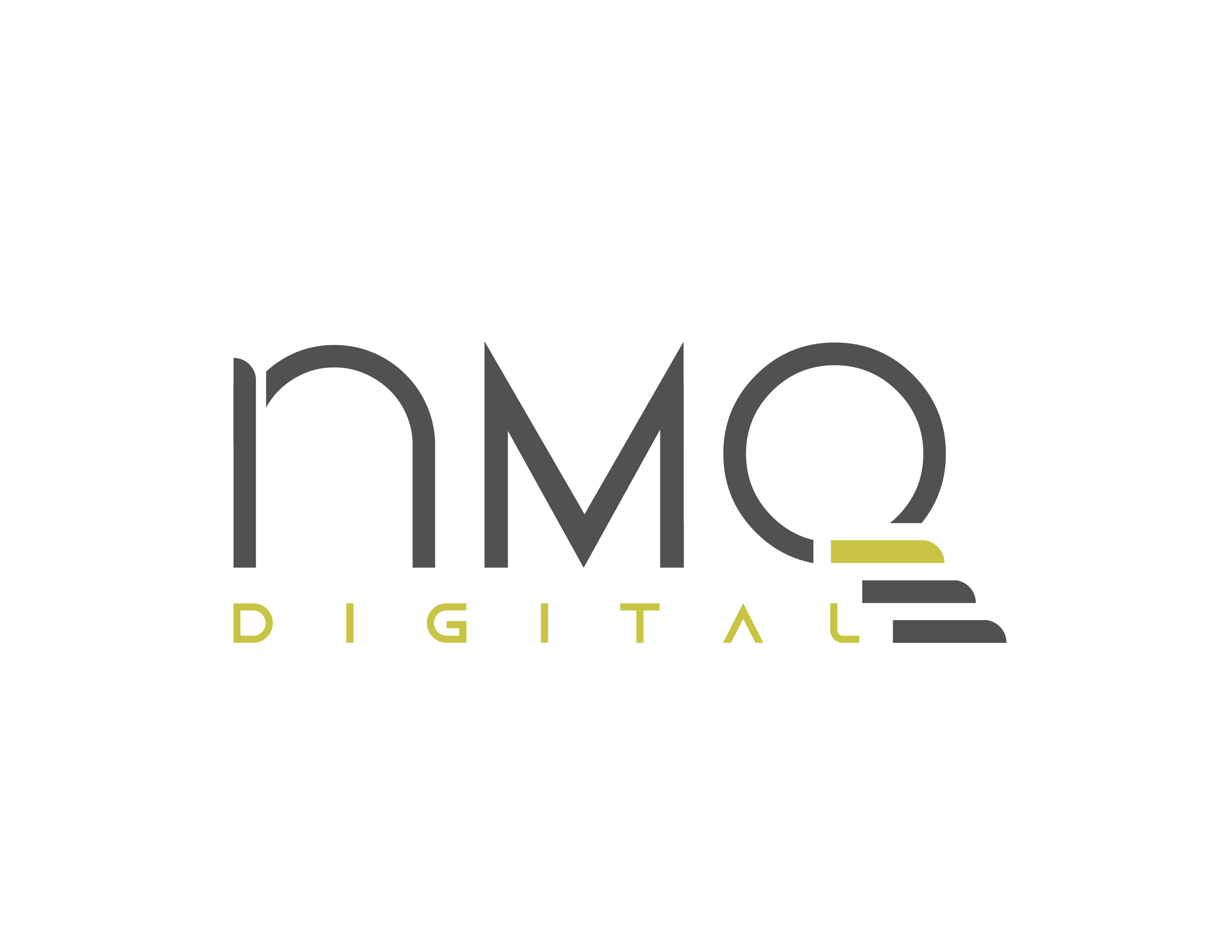Social media has become an indispensable tool for businesses to connect with their audience, drive engagement, and achieve their business goals. However, tracking the true return on investment (ROI) of your social media efforts can be challenging. That's where this comprehensive guide comes in.
In this article, we will focus on;
- Understanding the ROI Landscape
- Key Metrics for Measuring Social Media ROI
- Attribution Models on Social Media
- Best Practices for Measuring Social Media ROI
1: Understanding the ROI Landscape
Social media has emerged as a powerful tool for businesses to connect with their audience, drive engagement, and achieve tangible business objectives. However, without effective measurement, it can be challenging to determine the true ROI of these social media investments. This is where the art of social media ROI measurement comes into play.
ROI, or return on investment, is a crucial metric that assesses the effectiveness of any marketing campaign. In the context of social media, ROI represents the financial gain or loss associated with social media activities.
Determining ROI involves comparing the value generated by social media efforts to the resources invested in them.
a) Sales or Leads
In this scenario, ensure that all your content includes trackable links leading to your store. This ensures accurate tracking of the user's origin. The Return On Investment (ROI) calculation would be as below in this case.
ROI=(SOCIAL MEDIA GAIN-SOCIAL MEDIA INVESTMENT/INVESTMENT) X 100
Let's say you're a business owner and you want to calculate the return on investment (ROI) for your social media marketing campaign.
Suppose you invested $5,000 in your social media marketing efforts, and as a result, you gained $15,000 in revenue directly attributed to your social media activities. Now, you can use the formula you provided to calculate the ROI:
ROI=(SOCIAL MEDIA GAIN−SOCIAL MEDIA INVESTMENT/INVESTMENT)×100
ROI=($15,000−$5,000/5,000)×100
ROI=($10,000/5,000)×100
ROI=2×100
ROI=200%
In this example, your ROI for the social media marketing campaign would be 200%, indicating that for every dollar you invested, you gained $2 in revenue. This means your social media campaign was profitable and generated a positive return on investment.
b) Increase Customer Loyalty & Retention
This is more complex to analyze and might require some time. But the goal here is to have exclusive benefits to your social media fans and track their behavior to see if there is any increase in customer loyalty and retention.
ROI=(SOCIAL MEDIA PROGRAM PROFIT-LOYALTY PROGRAM INVESTMENT/INVESTMENT) X 100
Let's consider a scenario where you have implemented a social media program and a loyalty program for your business. You want to calculate the return on investment (ROI) for both programs combined.
Suppose you invested $8,000 in your loyalty program, and as a result of both the social media program and loyalty program, you generated an additional profit of $20,000. Now, you can use the formula you provided to calculate the combined ROI:
ROI=(20,000-$8,000/$8,000)×100
ROI=($12,000/8,000)×100
ROI=1.5×100
ROI=150%
In this example, your combined ROI for the social media program and loyalty program would be 150%.
This indicates that, on the whole, for every dollar invested in both programs, you gained $1.50 in profit. This positive ROI suggests that the combined efforts of the social media program and loyalty program are contributing positively to your business's overall profitability.
c) Increase Customer Engagement
If your main target is to increase customer engagement and interaction, you need to determine how much more you will spend on research, content creation, etc.
You also need to be aware of how much you spend per interaction. Note that this is not related to boosting posts but to increasing engagement organically.
ROI=(VALUE OF SOCIAL MEDIA INTERACTION-SOCIAL MEDIA INVESTMENT/INVESTMENT) X 100
Let's consider a situation where you're measuring the return on investment (ROI) for a social media campaign based on the value of social media interactions.
Suppose you invested $6,000 in a social media campaign, and as a result of the campaign, you estimate that the value of social media interactions (such as likes, comments, shares, etc.) contributed an additional value of $12,000 to your business. Now, you can use the formula you provided to calculate the ROI:
ROI=(12,000−$6,000$/$6,000)×100
ROI=($6,000/$6,000)×100
ROI=1×100
ROI=100%
In this example, your ROI for the social media campaign based on the value of social media interactions would be 100%.
This indicates that, for every dollar invested, you gained an additional dollar in value from social media interactions. A 100% ROI suggests that your social media campaign was able to generate value equal to the investment, making it a successful and worthwhile effort.
2: Key Metrics for Measuring Social Media ROI
A comprehensive social media ROI measurement strategy encompasses a variety of metrics that align with specific business goals. These metrics typically fall into three categories:
1: Metrics for Sales or Lead Generation
a) Conversion rate
The conversion rate on social media is a crucial metric that measures the percentage of users who take a desired action (e.g., making a purchase, signing up for a newsletter, or downloading a resource) out of the total number of users who engaged with your content.Let's say you run a social media advertising campaign for an e-commerce store. During the campaign, you track the number of users who clicked on your ad and the number of users who made a purchase. Here are the details:
- Total clicks on the ad: 5,000
- Number of purchases made: 200
CR: (Number of purchases / Total clicks) X 100
(200/5000) X 100 = 4%
In this example, the conversion rate for your social media advertising campaign is 4%.
This means that 4% of the users who clicked on your ad went on to make a purchase. A higher conversion rate generally indicates that your social media campaign is effectively persuading users to take the desired actions you've set, making it a valuable metric for evaluating campaign success.
b) Cost per lead (CPL)
CPL represents the average cost to acquire a new lead through social media marketing campaigns. A lead could be someone who signs up for a newsletter, fills out a contact form, or takes another action indicating interest in your products or services.
Let's say you invested $2,000 in a social media advertising campaign, and during the campaign, you generated 500 leads.
Cost Per Lead (CPL)= (Total Campaign Cost / Number of Leads)
$2,000/500= $4
In this example, the Cost Per Lead for your social media campaign is $4.
This means that, on average, it costs you $4 to acquire each lead through your campaign.
Monitoring CPL is crucial because it helps you evaluate the efficiency of your social media strategy in terms of lead generation and allows you to compare the cost-effectiveness of different campaigns or channels.
Lower CPL values are generally desirable as they indicate a more cost-effective lead acquisition process.
2: Metrics for Customer Loyalty and Retention
a) Customer lifetime value (CLV)
CLV estimates the total revenue a customer is expected to generate throughout their lifetime.
Assume you have an online business that sells subscription-based software services. Your average revenue per customer per month is $50, and you estimate that the average customer remains subscribed for 24 months.
Customer Lifetime Value (CLV)=Average Revenue per Customer per Month X Average Customer Lifespan (in months)
CLV=$50×24
CLV=$1,200
In this scenario, the Customer Lifetime Value for a customer acquired through your social media campaign is $1,200.
This means that, on average, you can expect a customer acquired through your social media efforts to generate $1,200 in revenue throughout their 24-month relationship with your business.
This CLV figure is valuable for decision-making in marketing and customer acquisition strategies.
It helps you assess the long-term value of customers acquired through social media channels and guides your investment in social media marketing efforts based on their potential impact on customer retention and revenue generation over time.
b) Net promoter score (NPS)
Net Promoter Score (NPS) is a metric that measures customer loyalty and satisfaction based on the likelihood of customers recommending your product or service to others.
It is commonly measured through a simple survey question, such as "On a scale of 0 to 10, how likely are you to recommend our product/service to a friend or colleague?"
Let's consider a scenario where you run a social media campaign to promote a new product. After the campaign, you survey your customers and ask them the NPS question. The responses are categorized into three groups:
- Promoters (score 9-10): 300 customers
- Passives (score 7-8): 100 customers
- Detractors (score 0-6): 50 customers
Now, calculate the Net Promoter Score using the formula:
NPS=((Promoters−Detractors) / Total Respondents)) X 100
NPS=((300−50) / 450)) X 100
NPS=(250/450) X 100
NPS=55.56
In this example, the Net Promoter Score for your social media campaign is approximately 55.56.
NPS can range from -100 to 100, and a positive score is generally considered good.
The higher the NPS, the more satisfied and loyal your customers are, and they are more likely to recommend your product or service to others. Monitoring NPS after social media campaigns can help you gauge customer satisfaction and the effectiveness of your marketing efforts.
3: Metrics for Engagement and Positive Sentiment
a) Likes, comments, and shares
These metrics indicate the level of engagement with social media content.
Let's say you post a promotional video on your company's social media account, and you want to measure the engagement by looking at the number of likes, comments, and shares it receives.
After 24 hours, here are the engagement metrics:
- Likes: 500
- Comments: 50
- Shares: 30
These metrics provide insights into how your audience is interacting with the content you posted.
-
Likes: Represents the number of users who appreciated or enjoyed your content. In this example, the video received 500 likes, indicating a positive reaction from the audience.
-
Comments: Reflects the number of users who engaged in conversations or shared their thoughts about the video. With 50 comments, it suggests a level of interaction and interest beyond just passive viewing.
-
Shares: Indicates the number of users who found your content valuable or interesting enough to share with their network. In this case, the video was shared 30 times, potentially expanding its reach to a broader audience.
These engagement metrics can help you understand the success of your social media content.
Higher numbers generally indicate a more engaged audience, while lower numbers may prompt a reassessment of your content strategy. Analyzing likes, comments, and shares collectively gives a more comprehensive view of how well your content resonates with your audience on social media.
b) Positive sentiment analysis
Positive sentiment analysis involves assessing the positive emotional tone expressed in textual content, such as comments or reviews on social media.
Let's consider an example where you analyze the sentiment of comments on a recent social media post:
After analyzing 100 comments on a post, you find that:
- Positive Comments: 80
- Neutral Comments: 15
- Negative Comments: 5
These sentiment analysis metrics provide insights into how the audience perceives and responds to your content.
-
Positive Comments: Indicates the number of users who expressed positive sentiments, such as liking the product, appreciating the content, or giving positive feedback. In this example, 80 out of 100 comments were positive, suggesting a strong positive sentiment among the audience.
-
Neutral Comments: Represents comments that do not express strong positive or negative sentiments. These could be more informational or objective. In this example, 15 comments were neutral.
-
Negative Comments: Indicates the number of users who expressed dissatisfaction, criticism, or negative feedback. With 5 negative comments, it's a relatively low percentage compared to the total, which is a positive sign.
Analyzing sentiment helps you understand the overall perception of your content or brand on social media.
A high percentage of positive sentiment is generally desired as it indicates a favorable response from the audience. Monitoring sentiment analysis regularly can provide valuable insights into audience perception, allowing you to adapt your social media strategy accordingly.
3: Attribution Models on Social Media
Attribution models in social media refer to the methods or rules used to assign credit to different touchpoints in a customer's journey that led to a particular action or conversion.
The goal is to understand how various interactions across social media channels contribute to the outcome, such as a purchase or conversion. Here are three common attribution models used in social media:
Last Click Attribution
In this model, all the credit for a conversion is given to the last touchpoint that the user interacted with before taking the desired action.For example, a user sees an ad on Facebook, clicks on it, and then later finds your website through a Google search and makes a purchase. In a last-click attribution model, all the credit for the sale would go to the Google search.
First Click Attribution
This model attributes all the credit for a conversion to the first touchpoint that initially attracted the user's attention and started the customer journey.For example, a user discovers your brand through an Instagram post, then later sees an ad on Twitter and eventually makes a purchase. In a first-click attribution model, all the credit for the sale would go to the initial discovery on Instagram.
Linear Attribution
Linear attribution gives equal credit to all touchpoints in the customer journey. It acknowledges that each interaction, regardless of its position in the journey, played a role in the outcome.For example, a user first sees a post on LinkedIn, then clicks on an ad on Pinterest, and finally, through a direct link, visits your website and completes a purchase. In a linear attribution model, credit is distributed equally among LinkedIn, Pinterest, and the direct link.
Each attribution model provides a different perspective on how marketing efforts contribute to conversions.
Choosing the right model depends on your business goals, the complexity of the customer journey, and the nature of your social media marketing strategy.
Many businesses use a combination of these models or employ advanced multi-touch attribution models to gain a more nuanced understanding of their marketing effectiveness.
4: Best Practices for Measuring Social Media ROI
Measuring the return on investment (ROI) of social media efforts is an essential aspect of any comprehensive digital marketing strategy.
As businesses increasingly leverage social media platforms to connect with their audience, understanding the impact and effectiveness of these interactions becomes paramount.
Best practices for measuring social media ROI encompass a range of methodologies, tools, and key performance indicators (KPIs) that go beyond mere likes and shares.
From tracking conversion rates and customer lifetime value to implementing robust attribution models, a well-rounded approach to social media ROI measurement not only quantifies the success of campaigns but also guides strategic decisions to optimize future endeavors.
Here are a couple of suggestions for you;
- Define Clear Goals: Establish specific, measurable, achievable, relevant, and time-bound (SMART) goals for your social media campaigns. This will help you focus your measurement efforts and track progress toward achieving your objectives.
- Choose the Right Metrics: Select the metrics that align with your specific goals. For instance, if your goal is to increase sales, focus on metrics like conversion rate and CPL.
- Track Data Consistently: Regularly collect and analyze data from your social media platforms and analytics tools. This will provide insights into the performance of your campaigns and identify areas for improvement.
- Use Attribution Models: Attribution models help you determine which social media touchpoints influenced a particular action, such as a purchase or lead generation.
- Compare ROI to Industry Benchmarks: Benchmark your social media ROI against industry averages and competitors to assess your performance relative to others.
- Automate Reports: Utilize social media analytics tools to generate automated reports that provide a comprehensive overview of your social media performance.
- Communicate Insights to Stakeholders: Share your social media ROI insights with key stakeholders, such as executives and marketing teams, to demonstrate the value of your efforts.
Measuring social media ROI is an essential step in optimizing your social media marketing efforts and ensuring your investments are aligned with business objectives.
By effectively tracking key metrics, using appropriate attribution models, and communicating insights effectively, you can gain valuable insights into the effectiveness of your social media strategy and make informed decisions for future campaigns.
If you need any assistance with your social media campaigns, NMQ Digital is here with its Social Media Services.






